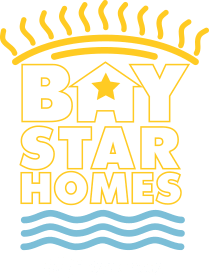We love that you’re recycling – but there’s so much more that goes into our environmental footprint. Start Smart, Recycle right is about every day choices that often begin right in your shopping cart. Do you refill a reusable water bottle or buy a disposable one on the go? Pick the eggs in the cardboard carton or one made of plastic foam? Shop secondhand or rely on two-day shipping for something new? These small decisions add up—and they matter.
When something does need to be thrown away, putting it in the proper waste stream – trash, recycling, compost, donation, or hazardous waste drop-off – helps ensure it’s handled responsibly.
Journey of Recycling
How to Recycle Right
How to Avoid Contamination
GOOD TO KNOW & DO
The Journey of Recycling Right
Once you see how the journey unfolds, we hope you understand the importance of knowing how to recycle right and making the right recycling decisions along the way.
1 MAKING A SMART CHOICE
It starts when you…
- Choose products that perhaps don’t have packaging.
- Or products that have packaging that can be recycled.
- Or products that themselves can be recycled in your community when you’re done using them.
- Or products that can be reused. (Jelly jars for juice glasses, anyone?)
We call that starting smart, and it can be as easy as—for example—choosing the dozen eggs packaged in cardboard rather than Styrofoam™.
2 RECYCLING RIGHT
Once you’ve purchased and used your item, the next step in the recycling journey is choosing whether it’s recyclable at all. It may be accepted for recycling at curbside, at a specific drop-off place in your community, or possibly not at all (which means this item belongs in the trash).
3 DELIVERY TO THE MATERIALS RECOVERY FACILITY
Your item next gets collected, sorted, compacted, and bundled with similar materials at the materials recovery facility so it’s ready to be processed.
4 SHIPPING TO THE RECYCLING PROCESSOR
In preparation for its next life, your item is broken down into raw materials and sold to manufacturers.
5 TRANSFORMATION AT THE MANUFACTURING PLANT
Finally, your item, now in its raw stage, is transformed into something brand new. And the cycle can begin again…
Recycle Right
Let’s be honest. Recycling programs can be confusing. But we’re here to help by getting back to the basics: Paper, plastic bottles and metal cans. These items are accepted in every curbside recycling program in Hampton Roads. Just make sure they are empty, rinsed, and dry. Want to recycle more than the basics? Be sure to check the Waste Wizard lookup tool before you decide where to toss your items.
Paper that can be recycled:
- Printer Paper (stack of pages)
- Newspaper
- Magazines
- Flattened Cardboard Boxes
- Cardboard Rolls
Empty plastic bottles and jugs with a neck or spout can be recycled, including:
- Beverage Bottles and Jugs
- Cleaning Product Bottles and Jugs
Empty metal cans that can be recycled:
- Steel and Tin Cans
- Aluminum Cans
Avoid Contamination
There’s no “maybe” in the recycling process. Many people wish something was recyclable (something we call wish-cycling) but that doesn’t make it true. If you don’t know if something is recyclable and in the right condition, don’t throw it in the recycling bin.
Items that aren’t accepted for recycling can make recycling less efficient, and worse, cause safety issues for truck drivers and recycling workers. For example, rechargeable batteries can start fires and plastic bags damage machines at the sorting facility causing downtime and costly repairs.
Before you toss anything into the recycling bin, ask yourself:
- Is this recyclable and accepted in my community? If you don’t know, find out quickly using the Waste Wizard lookup tool.
- Is it empty, clean, and dry? If not, then empty and rinse it out before you put it in the bin.
Remember, it’s up to you to Start Smart and Recycle Right.
Start Smart
- Think before you buy
- Choose recyclable packaging
- Reuse it or donate, if possible
Recycle Right
- Know what can be recycled
- Know where it can be recycled
- Clean before putting in the bin

